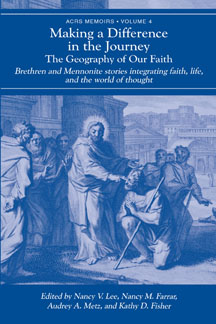|
|
We make sense of our lives by the stories we tell, writers confess. Telling our stories opens new and different ways of seeing—both for the reader and the writer. As a story lover myself, I was drawn in by the wide variety of these selections. They include all the elements of a good read: suspense, outrageous encounters, and examples of courage and uncommon grace. This volume, fourth in the series of faith journey accounts, asks “What difference did it make?” At one of the college commencement ceremonies I recently attended, the president asked the graduates to look ahead. “What difference would it make if you knew the end of the story?” he asked. Here we have a chance to enter into the lives of leaders reflecting on that question. We are permitted insights into the worlds of international affairs, educational institutions, denominational conflicts, professional and journalism intrigues, and entrepreneurial risk-taking. We have here not simply a record of faith journeys moving from past to present but, more importantly, intimations of the future—how fifteen individuals in a particular time and place made a difference in ways which continue to shape the future. Fittingly for this Geography of Our Faith series, time and place serve effectively as organizing themes. Readers will move from pulpits to board rooms to courtrooms; from lecture halls to get-your-hands-dirty refugee camps. Settings include the familiar Shenandoah Valley and other rural enclaves of Mennonite and Brethren communities. But these stories are global in scope, reflecting experiences in such places as the Middle East, Afghanistan, Africa, and Vietnam. What moves me about these
stories is a
sustained sense of awe in life’s unfolding surprises. As one writer
puts it, “God is always creating something new.” There is evidence of
deep faith embedded in these accounts. But often that faith must
wrestle with personal failure and with life’s unsettling ambiguities
and paradoxes—an acknowledgement that we have no assurance of order or
clarity. In a world of complexity and unrelieved turmoil, a time when many are infected by despair and desperation, the last word must be given to Martin Lehman, a church bishop who dared to ask questions that were not allowed. He offers hope for the journey, citing 1 John 2:8 as the compass giving direction to his life: “The darkness is passing and the true light is already shining.” Martin’s assurance is based on his own sense of the ending of the story. These marvelous accounts point to that “true light” for all of us on the journey. —Lee
Snyder, President Emeritus, Bluffton University; Academic Dean and Vice
President, 19841996, and Interim President, 2016, Eastern Mennonite
University; Author, At
Powerline and Diamond Hill |
|||||





